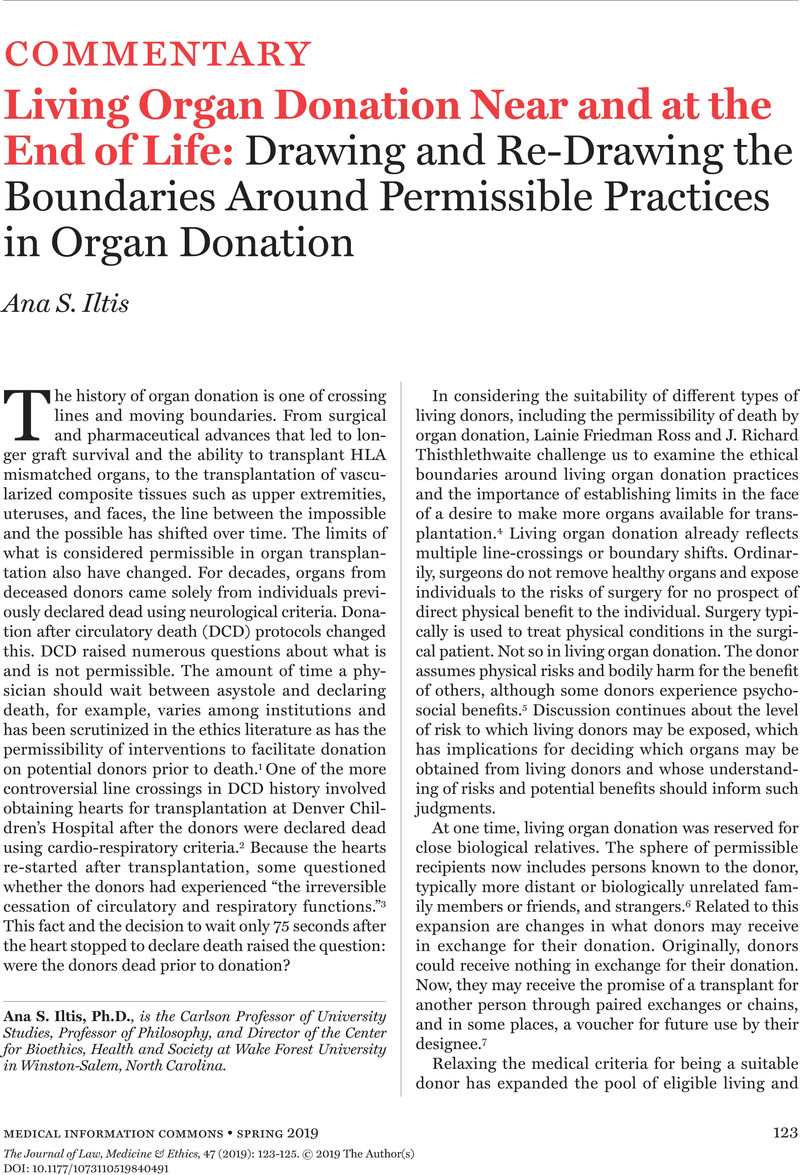Shewmon, D. A.,
“Constructing the Death Elephant: A Synthetic Paradigm Shift for the Definition, Criteria, and Tests for Death,” Journal of Medicine and Philosophy 35, no.
3 (
2010):
256-
298; S.K. Shah and F.G. Miller, “Can We Handle the Truth? Legal Fictions in the Determination of Death,”
American Journal of Law & Medicine 36, no. 4 (2010): 540-585; S.K. Shah, “Piercing the Veil: The Limits of Brain Death as a Legal Fiction,”
University of Michigan Journal of Law Reform 48 (2014): 301-346; R. M. Veatch, “Killing by Organ Procurement: Brain-Based Death and Legal Fictions,”
Journal of Medicine and Philosophy 40, no. 3 (2015): 289-311; R.D. Truog and J.C. Fackler, “Rethinking Brain Death,”
Critical Care Medicine 20, no. 12 (1992): 1705-1713; N. Fost, “Reconsidering the Dead Donor Rule: Is it Important that Organ Donors be Dead?”
Kennedy Institute of Ethics Journal 14, no. 3 (2004): 249-260; M.L. Condic, “Determination of Death: A Scientific Perspective on Biological Integration,”
Journal of Medicine and Philosophy 41, no. 3 (2016): 257-278; D.A. Shewmon, “The Brain and Somatic Integration: Insights into the Standard Biological Rationale for Equating ‘Brain Death’ with Death,”
Journal of Medicine and Philosophy 26 (2001): 457–478; E.C. Brugger, “Are Brain Dead Individuals Dead? Grounds for Reasonable Doubt,”
Journal of Medicine and Philosophy 41, no. 3 (2016): 329-350; M. Collins, “Reevaluating the Dead Donor Rule,”
Journal of Medicine and Philosophy 35, no. 2 (2010): 154-179.
CrossRefGoogle Scholar 




